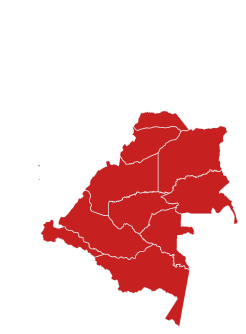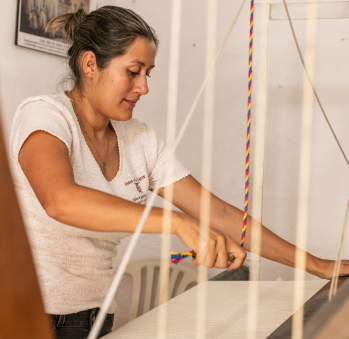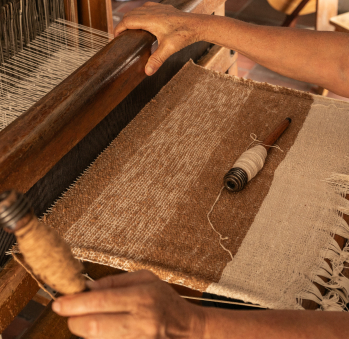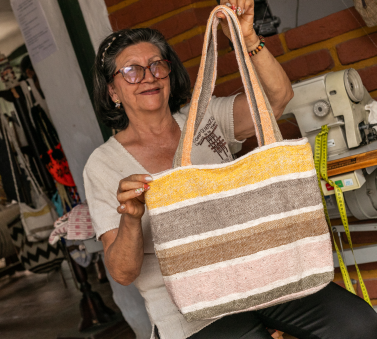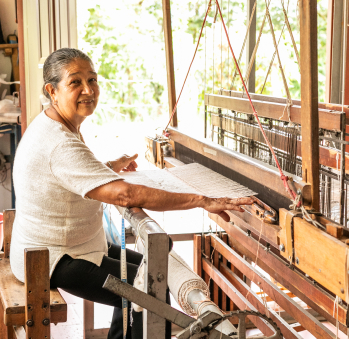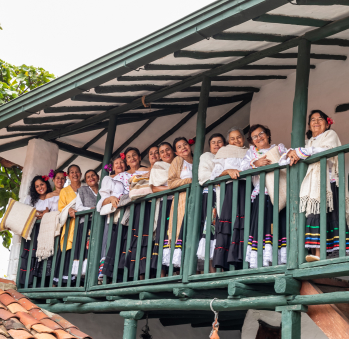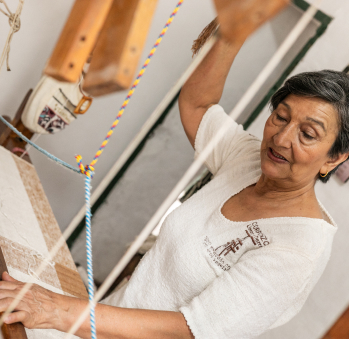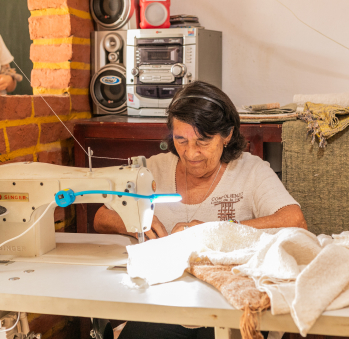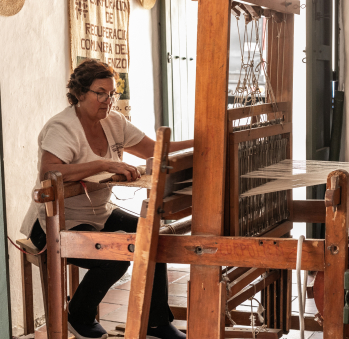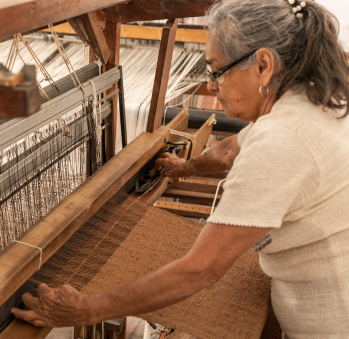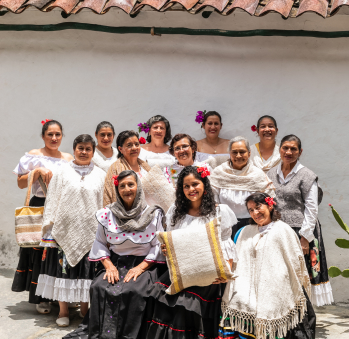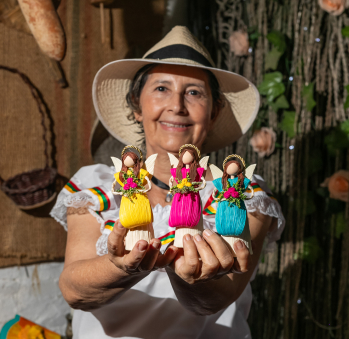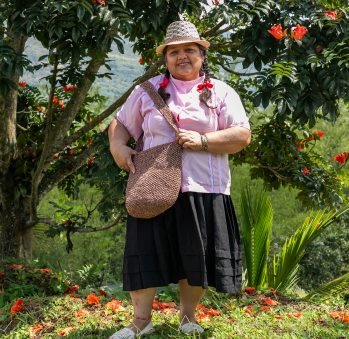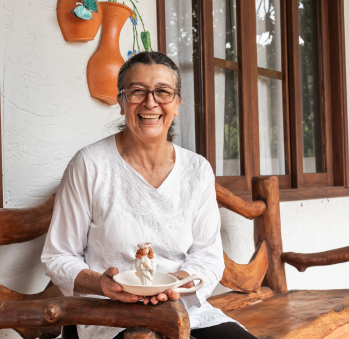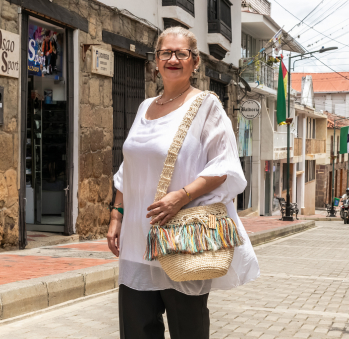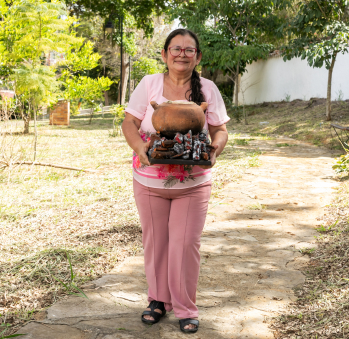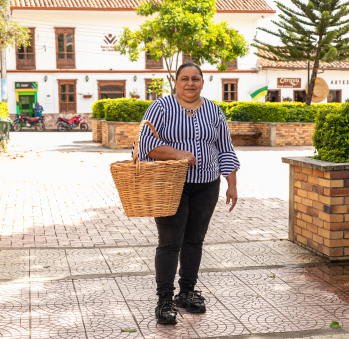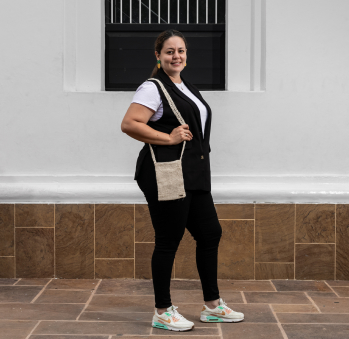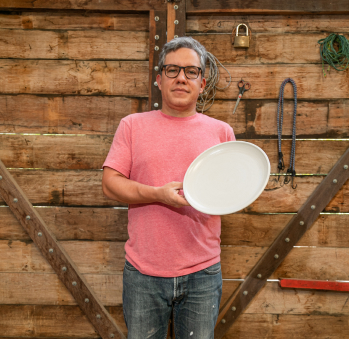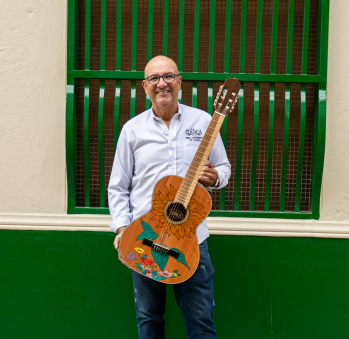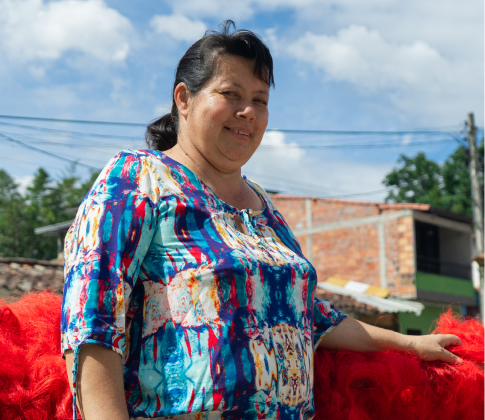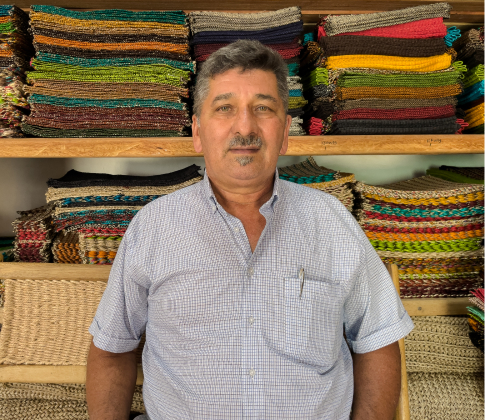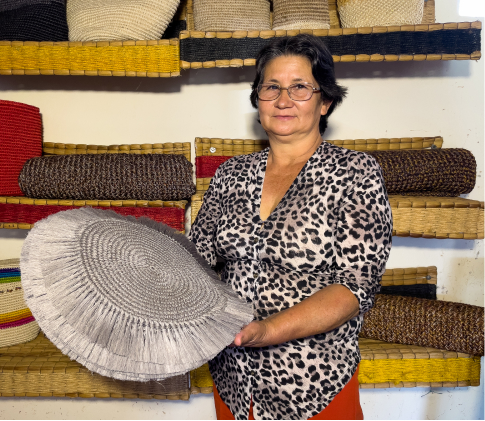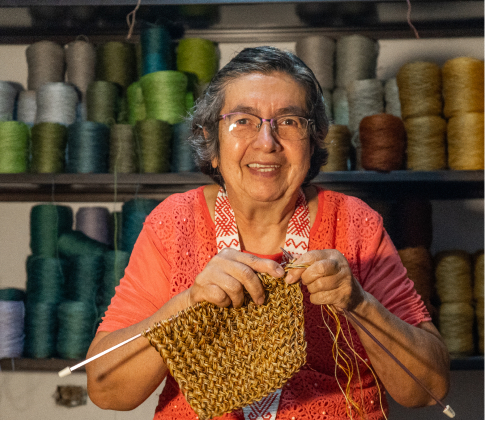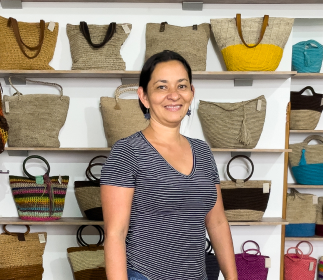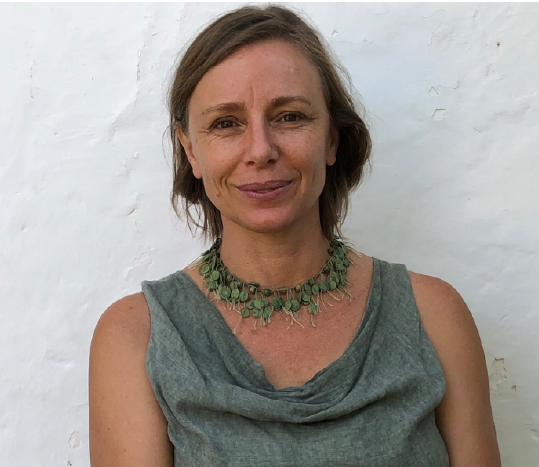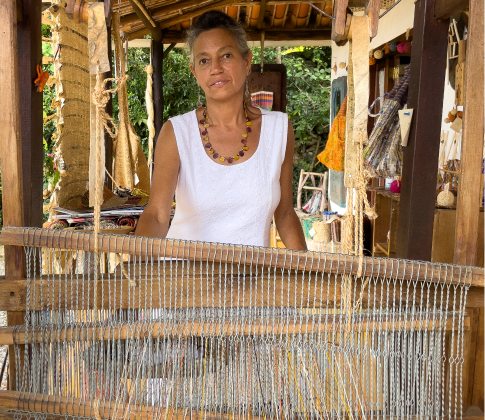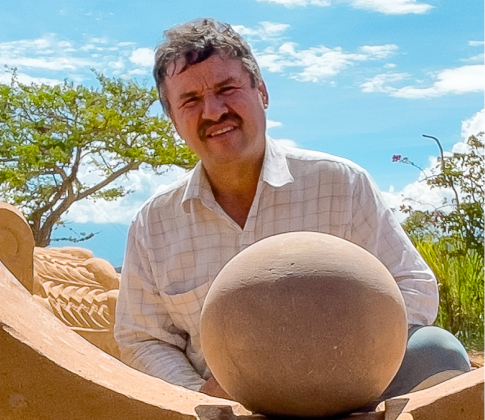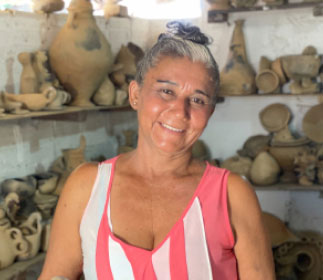Corpolienzo
Workshop: Corpolienzo
Craft: Weaving
Trail: Santander Route
Location: Charalá, Santander
Corpolienzo is predominantly made up of women, the heirs of the weaving and cotton-spinning tradition in Charalá, and current ambassadors of the craft’s transformation. They hold the deepest knowledge of the history behind the cloths once used to dry panela in the sugar mills, as it reflects the history of their own families, who had to adapt when panela began to be dried on wooden boards. The grandmothers, mothers, and neighbors of today’s weavers in Corpolienzo harvested cotton, spun it, and wove it into cloth for both panela and family clothing. With this shift, weaving took a backseat and its practice gradually faded.
When Pierre Raymond, an anthropologist and educator at the Institute of Rural Studies at Pontificia Universidad Javeriana, arrived in Charalá in 1981 to study panela production, he encountered this dying craft and the few grandmothers who still wove in their homes. His research then expanded to include Santander cotton, fueled by an interest in countryside economies and the preservation of agricultural production techniques. More than a decade later, after establishing a rural education program with the community at the Hogar Juvenil Campesino and supporting the association among those seeking new income opportunities, Corpolienzo was legalized in November 1993. The situation and possibilities intertwined: families were searching for opportunities, and he saw that they could harness the resources their land provided. They began cultivating cotton, corn, and cassava in the small plots around their homes, setting up looms, and seeking out women knowledgeable in weaving to share their expertise. Mercedes Silva, Cristina Cárdenas, and Encarnación Cala, the last generation to preserve the craft, were the first to turn the wheel of weaving knowledge, which has since spun continuously, reaching all the women involved in the corporation. Their knowledge did not die.
Then came the colors, alongside another of Raymond’s investigations into the dyeing methods of the Guane people. They learned to extract red from achiote, green and brown from chilca, green from aro, and gray from guava bark. Through practice, they managed to fix the colors to the fabrics, and they have had time to refine their techniques; after perfecting the colors, they continued to grow into what they are today. Having started with the weaving of ponchos and ruanas, they now offer three lines: personal, home, and accessories, creating products that combine locally spun cotton with industrial cotton. They produce everything from hammocks to bedspreads, all crafted by them across nine looms distributed between their urban and rural workshops. With such an admirable trajectory, it will be a pleasure to meet the members of this project that keeps the tradition of Charalá alive and involves seventy families, from cotton cultivation to the sale of their finished creations.
Craft
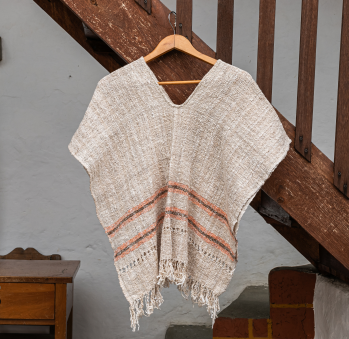
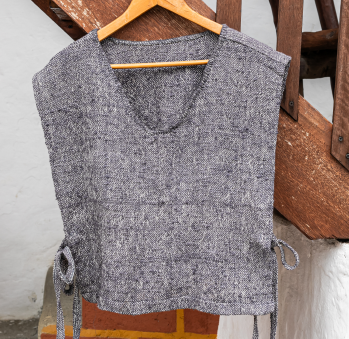
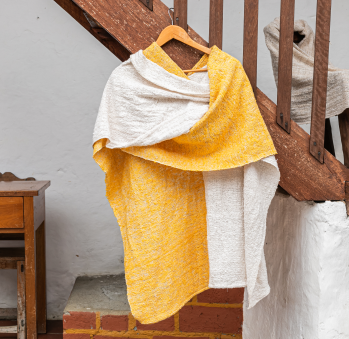
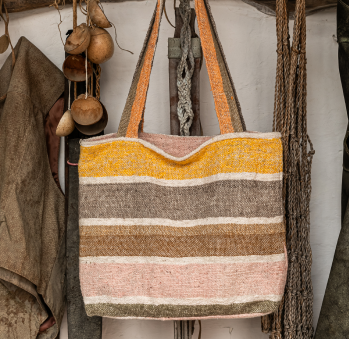
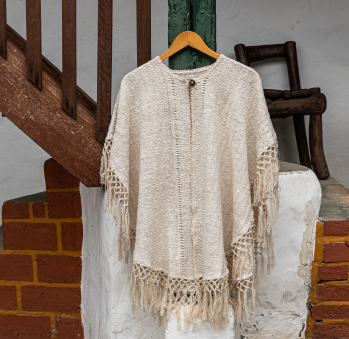
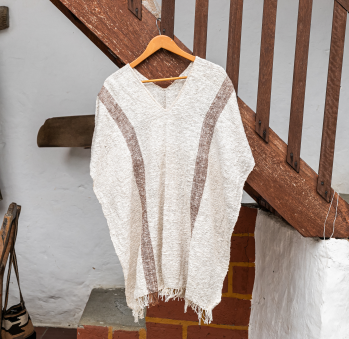






Artisans along the way
Artisans along the way
No puede copiar contenido de esta página

